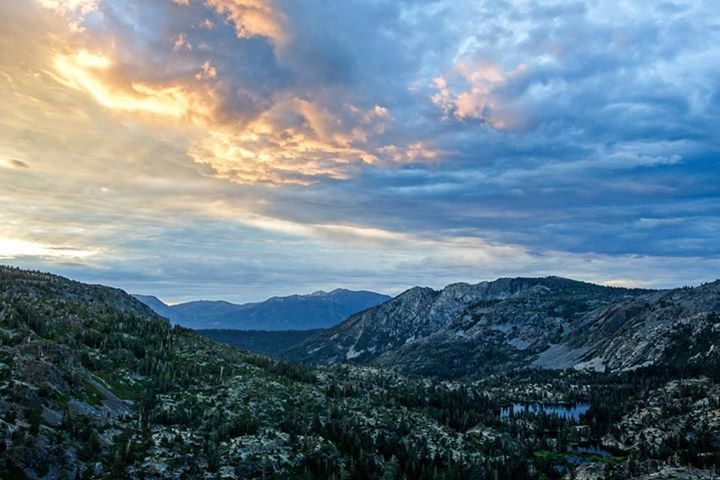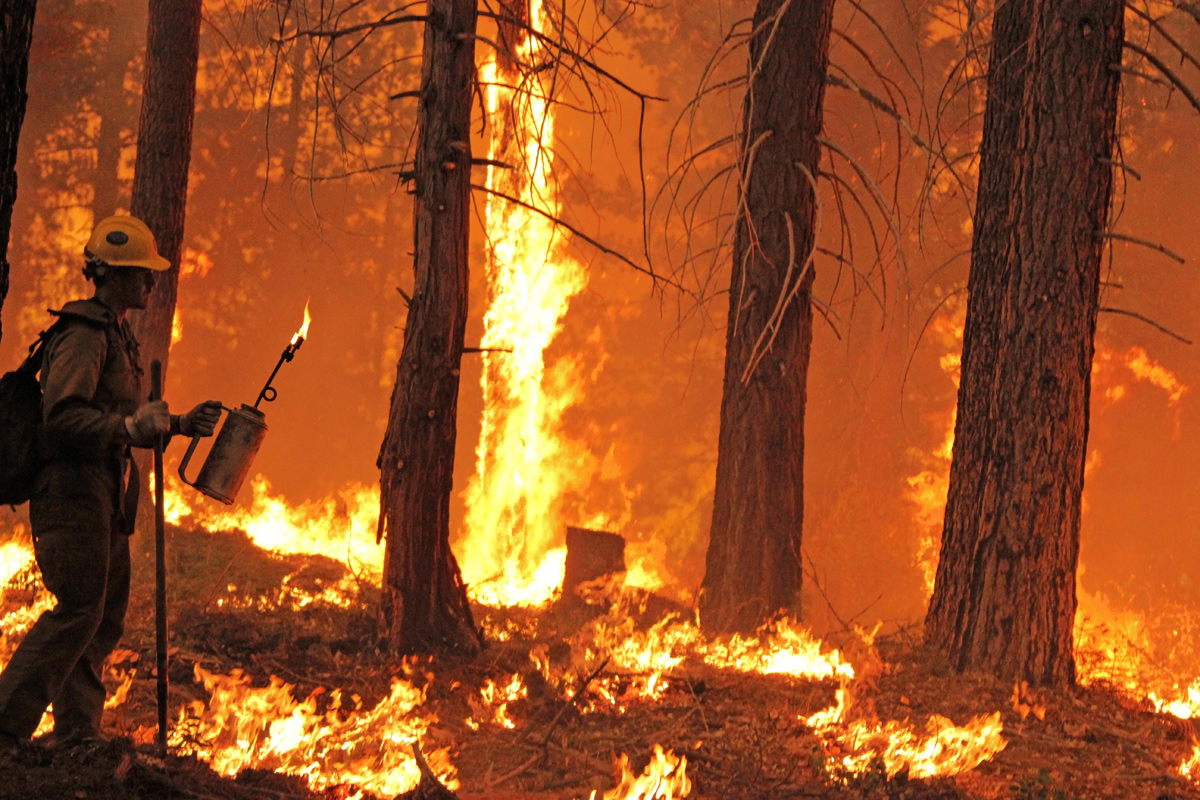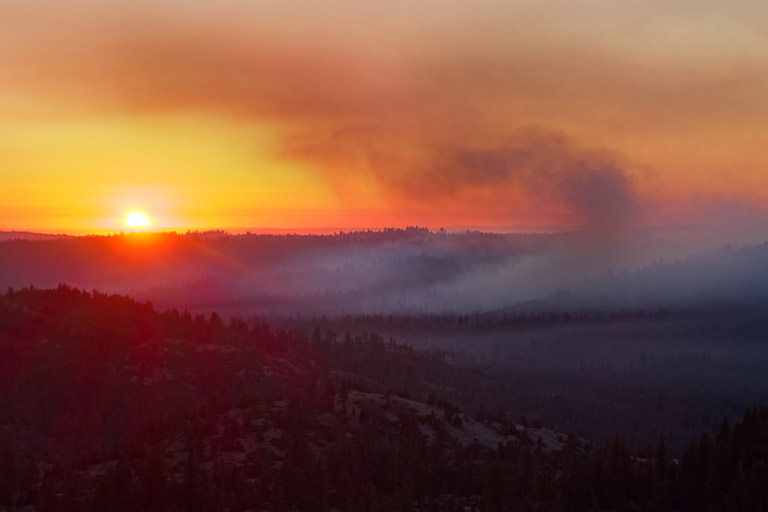- Stamping out forest fires indiscriminately leads to denser trees and debris in many forests, fueling unusually large wildfires.
- Recent U.S. wildfires have gained so much power that scientific models can no longer predict their behavior.
- A new paper urges the public to demand a correction in this trend by changing how forest fires are managed
At a time when wildfires around the world are burning through records for intensity and size, several western U.S. ecologists argue that in many forests our best hope is to fight fire with fire.
In a perspective published by the journal Science, the ecologists contend the U.S. can only effectively address its growing wildfire crisis by using controlled burns to clear excess fuels from forests. They say decades of fire suppression driven by negative public perceptions of fire have altered the role of wildfires in many ecosystems. Where modest flames once cleared debris and thinned out forests, accumulated fuels now pave the way for megafires.
“In much of dry western forests, frequent low- to moderate-intensity fire is what the system is adapted to and what it needs to be healthy,” said lead author Dr. Malcolm North, a University of California, Davis professor who also works as a U.S. Forest Service research ecologist. “That is not at all what we are providing these days.”
Often, in lieu of controlled burns, the Forest Service treats forests with mechanical thinning: logging and cutting back trees and brush. But paper coauthor Greg Aplet, senior director of the Wilderness Society in Denver, Colorado, said this just isn’t enough.
The heavy machinery needed can’t operate everywhere, Aplet explained. “It’s generally recommended that all mechanical treatment be followed up with fire,” he told Mongabay.

Denser forests packed with more debris have fueled severe fires like the King Fire, which burned almost 40,000 hectares in California’s El Dorado County in September 2014 – an area more than twice the size of Washington, D.C.
Not only are these fires larger and hotter, they are also less predictable. North said the fires are so uncharacteristic of what scientists are used to seeing that scientific models cannot reproduce their behavior.
“The [King] fire had enough energy that it created its own funneling windstorm effects where winds were over 50 miles [80 kilometers] an hour within the fire,” North said. “Generally firefighters cannot do anything about a fire once the winds get over 30 miles [50 kilometers] per hour and once the flame lengths get over 2.5 meters.”
Ironically, when things get this bad, there’s often only one thing left for firefighters to do: light up. In emergencies, firefighters use back burning to rob fuel from the fires before they spread even farther, North explained.

Working with smaller fire under favorable conditions to prevent bigger fires in the long term “isn’t anything new or revolutionary,” said Christopher Topik, a director at The Nature Conservancy (TNC) North American Region. But he said that aversion to risk in communities and government has impeded this strategy, as has the way emergency firefighting is funded.
In the U.S., fire suppression efforts and fire emergencies drain funds for preventative work. “It’s kind of embarrassing,” Topik said. “As a society we throw money at the emergencies, but not the stuff that reduces the emergencies.”
Topik supports passage of the Wildfire Disaster Funding Act, which he said would shield the conservation and fire-prevention components of the Forest Service budget. The government funds prevention efforts for other natural disasters in a similar way, he said.
He suggested the public also needs to accept some risk from smaller fires to protect forests and communities over the long haul. During controlled burns, Topik said, it’s easier to keep the public safe by monitoring smoke and guiding wildfires away from residential areas.
Regardless of the timing, a forest will burn, he said: “It’s just a question of will it burn wildly or will it burn with some control.”
As national forests across the country revise their fire management plans and the U.S. Senate discusses how to reform funding for forest fires, Aplet has urged the public to get involved. “We’re spending more on fire than ever in history and becoming less and less effective,” he said. “Something has got to change.”

Citation:
- M. P. North, S. L. Stephens, B. M. Collins, J. K. Agee, G. Aplet, J. F. Franklin, P. Z. Fulé. Reform forest fire management. Science Sept. 18, 2015. DOI:10.1126/science.aab2356
- C. Topik. Wildfires burn science capacity. Science Sept 18. 2015. DOI:10.1126/science.aad4202
Lindzi Wessel is a graduate student in the Science Communication Program at the University of California, Santa Cruz. Other Mongabay stories produced by UCSC students can be found here